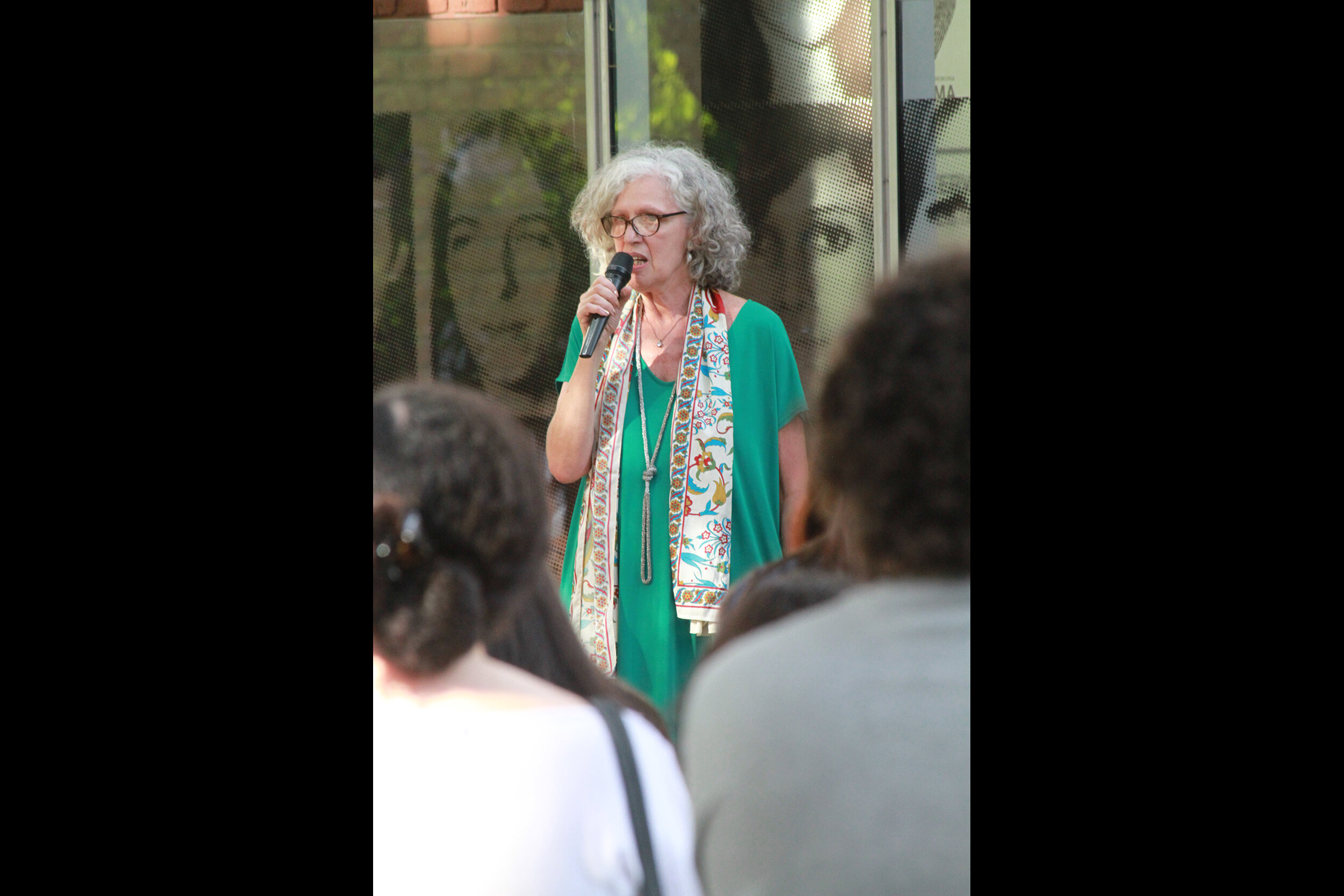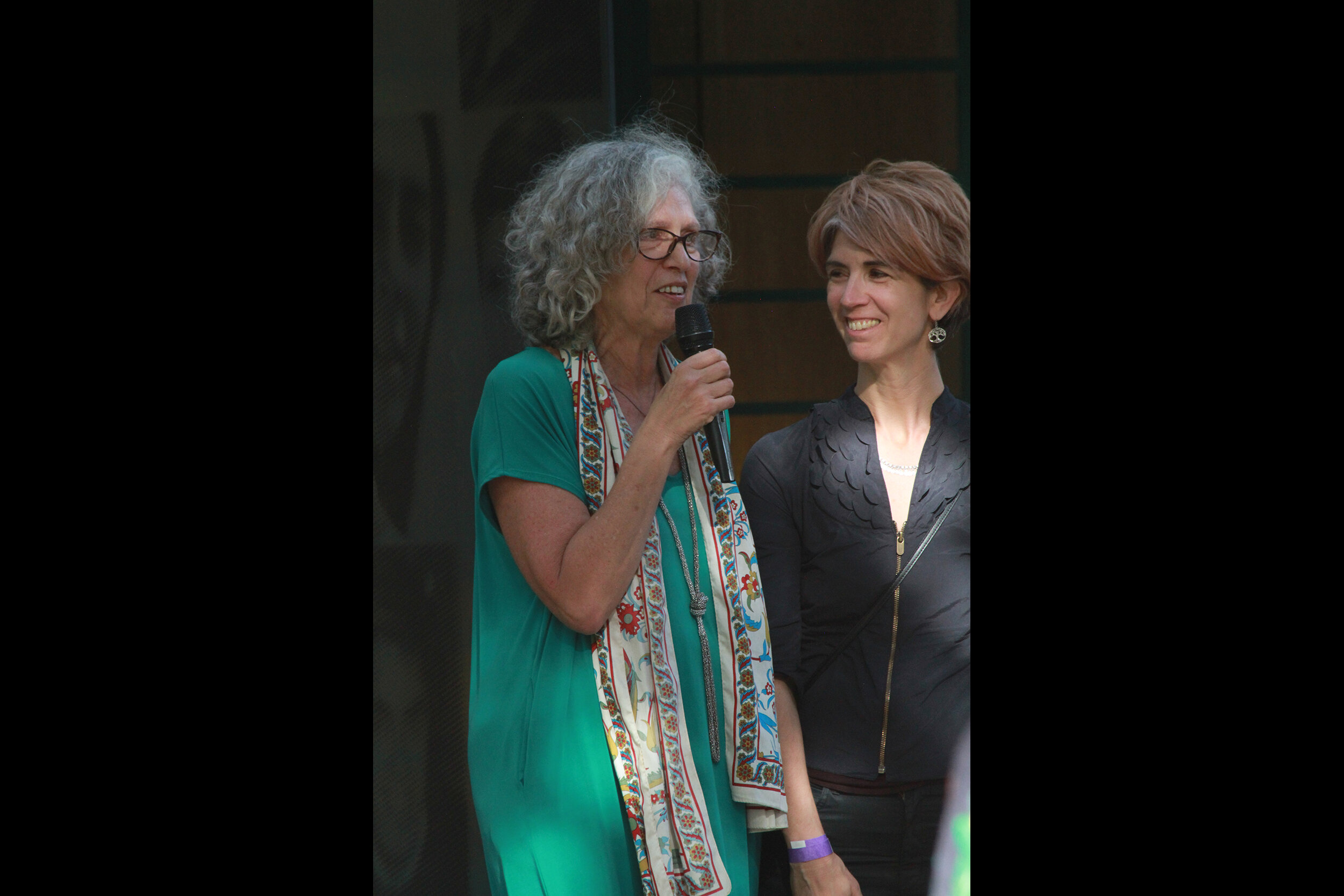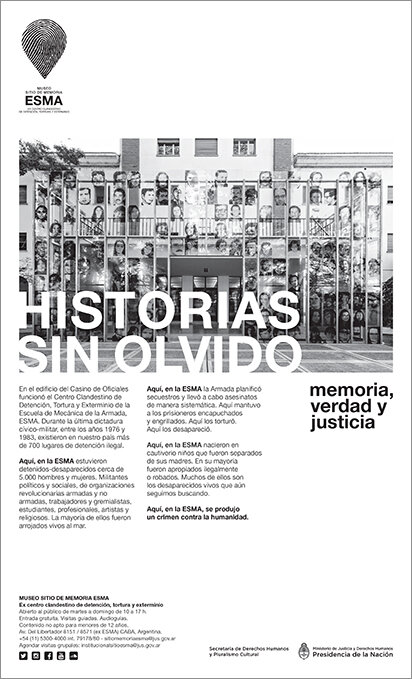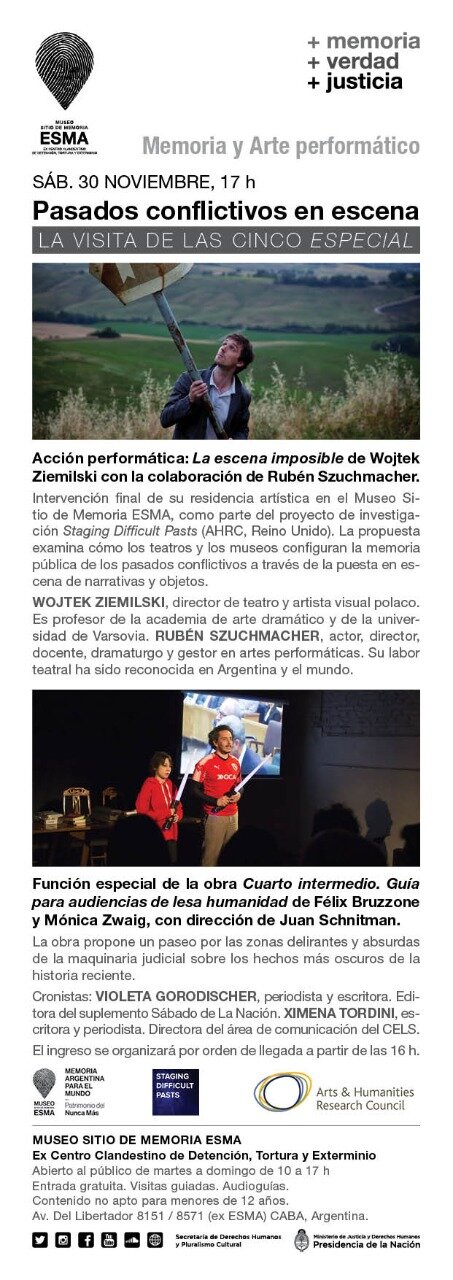
“Pasados conflictivos en escena”
Staging Difficult Pasts at ESMA Memory Museum
Buenos Aires, Argentina
November 2019
In a collaboration between the memory institution and the Staging Difficult Pasts research project, on Saturday 30 November 2019 “Pasados conflictivos en escena” was the last edition of the Five o’Clock Visit at ESMA Memory Site Museum. While offering an alternative approach to the building that functioned as a unit of torture during Argentina’s last dictatorship (1976-1983), the event included two performance interventions that addressed issues of memory and conflictive pasts through theatrical strategies. The interventions brought together local and international artists who called into question the figure of the perpetrator and discussed issues of justice. More than 120 people participated in the event. It was the first time the one of the museum’s 5 o’Clock Visit was organised by a transnational research project.
Museum Visit Video Documentation
During the opening Alejandra Naftal, ESMA Museum’s director, argued that this particular visit implied a big challenge. “This place was designed to be visited by any Argentinean who may wish to condemn state terrorism. It’s the fruit of many years of work and debate. Today we take the challenge of doing this performance intervention at the museum to explore new ways of thinking about what happened here and what is currently happening around us.”
Dr. Cecilia Sosa, a member of the Staging Difficult Pasts research team, added:
“The question that our project asks is how theatrical languages and innovative curatorial forms might create dialogues with art galleries and memory sites in turn generating new questions. This space, which cannot be altered because it is part of the ongoing trials, set the scene for and added richness to the dialogue and collaboration established through our project. We appreciate the possibility of carrying out this experience here.”
The first intervention, entitled The Impossible Scene directed by Polish theatre director Wojtek Ziemilski, took place at The Admiral’s House, which used to be Rubén Chamorro’s home, the ESMA’s director, during the military dictatorship. The performance was the result of a collaboration between Ziemilski and the renowned Argentine director Rubén Szuchmacher, who entered ESMA for the first time to perform the figure of a perpetrator that repents and asks for forgiveness. While the image of Szuchmacher’s devastated face was projected onto a wall, the director entered the room and called into question the authenticity of the image: “Can’t someone cry frankly when he has been a perpetrator?”, “Is this what crying is supposed to be like?” After the performance the audience exited the room through the main entrance of the Admiral’s House, which was opened for the first time since the inauguration of the museum in 2015.
La Escena Imposible, Performance Intervention
Artist Wojtek Ziemilski discusses his work, The Impossible Scene
The event also included a special performance of Recess. Guide for audiences against humanity, a playful intervention designed by writer and son of a disappeared couple Félix Bruzzone alongside the French Lawyer Mónica Zwaig and director Juan Schnitman. The performance took place at the Museum’s Golden Room, which used to be the headquarters of the Navy during the dictatorship and now has been transformed into a place of justice. Using humour, Bruzzone and Zwaig introduced their experience of attending the trials for ESMA, inviting volunteers from the public to simulate a court trial.
During the closing panel, local and international artists answered questions from the audience and reflected on their experiences of intervening artistically in the site of the biggest unit of torture in the country. Rubén Szuchmacher addressed the fact that this was the first time he had ever entered the space. “As an artist, I generally refuse to represent these kinds of topics. However, having done this work alongside Wojtek has been a very important experience, for which I will forever be grateful.” Polish director Ziemilski confessed how challenging the experience was for him: “When I arrived here I realised that the story had its weight, its difficulties. Every step, every day, every decision brought more difficulties, more weight. I wanted to create a contact with the public, to generate empathy. I did not find another way to address the issue. Now, I am afraid of your thoughts, of your feelings.” Cuarto Intermedio’s protagonists also talked about their experience of performing at the former detention centre: “It was very moving to hear so much laughter here, and I think that I liked it a little bit”, said Monica Zwaig. “It is really good that this space could be used to develop these kind of initiatives,” added Felix Bruzzone.
The event was also attended by survivors and witnesses Adriana Suzal and Néstor Fuentes, the visual artist Marcelo Brodsky, whose brother disappeared at ESMA; Liliana Furió, Analía Kalinec, and Paula Logorio, members of the Disobedient Stories collective; the playwright and daughter of disappeared parents Mariana Eva Pérez. The former deputy Gabriela Alegre, member of the Human Rights Agency’s board; the film director Benjamín Ávila; as well as members of the Staging Difficult Pasts research project Bryce Lease, Maria Delgado, Michal Kobialka and Joanne Rosenthal.
Media coverage
Página 12, “Las formas de mirar el terror” [Ways of looking at terror], by Diego Fernández Romeral, December 2, 2019. LINK
Cohete a la Luna: “La escena imposible” [The Impossible Scene], by Alejandra Dandán, December 8, 2019. LINK
Crisis, “Volver irreconocibles” [Unrecognizable return], by Ximena Tordini
23 January, 2020. LINK
Below is a gallery of images from the Museum Visit




































